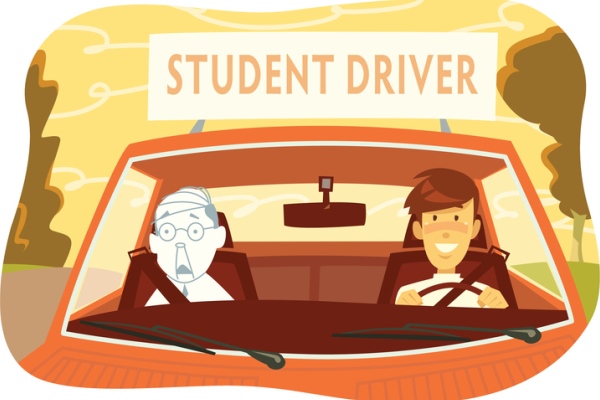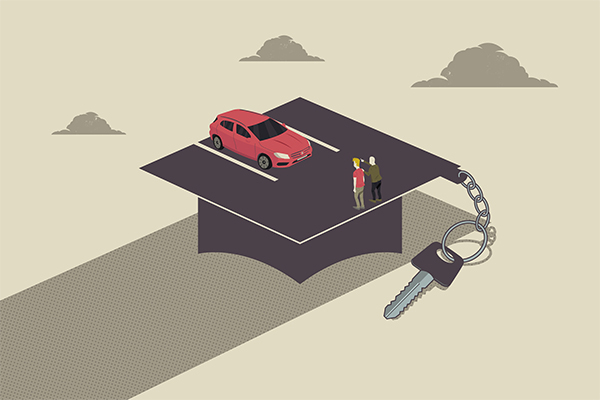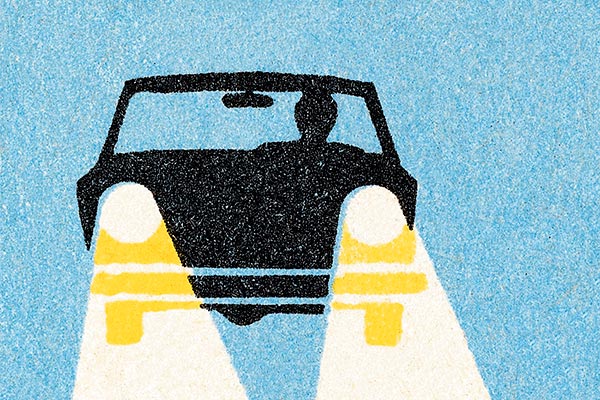From a new teen driver getting driving experience for the first time to an adult who may not have their license yet, learning to drive can come with a great deal of anxiety. If you’re teaching your child or a friend how to drive a car, Mark Primack, co-founder of Primo Driving Schools in Los Angeles, has some tips for making the learning process more effective and less stressful.
Be Compassionate
If you’re teaching someone how to drive, it’s important to have compassion for what is likely an anxious and potentially very stressful experience for them. Teen drivers will likely require an instructor to exhibit more patience to help them avoid distractions that can be caused by nervousness.
When teaching adults that are learning to drive for the first time, it is also important to show compassion and understanding for their situation. While lots of people delay learning to drive for simple reasons (like growing up without a car), many also do so because they had a difficult experience, like an accident. “Often, if someone is learning to drive as an adult, they’ve gotten it in their heads that it’s scary and dangerous,” says Primack. The right approach can convince them it doesn’t have to be, he insists. “Address [the fear] openly first, then set them up with steps to get them comfortable and more likely to have a good, safe experience.” Also, acknowledge that your friend may feel some embarrassment about not having mastered what some consider a “basic” life skill; assure them that it’s increasingly common not to learn as a teen and that learning is possible at any age.
Have A “Lesson Plan”
Planning is key to safe, smooth sessions with a teen or other new driver. So before teaching someone how to drive, make sure you’re both covered by up-to-date car insurance. Then set aside several windows of time for lessons. Primack typically recommends five or six two-hour lessons. Use his suggestions as a guide:
1st: Learning about the car itself: controls, diagnostics, gears, adjusting mirrors, lights and blinkers. Understanding the basics will help the driver feel more confident. Then move on to turning, breaking, reversing and pulling up to a curb in a residential area.
2nd: Introducing commercial areas and lane changes, right and left turns at intersections, and parking in a large, low-traffic lot.
3rd: Introducing higher-speed roads (50 mph) with lots of lane changes.
4th: Highway driving. “You’ll stay on the right side of the highway, so the driver gains exposure to merging into lanes and other cars merging into their lane,” says Primack.
5th: Tackling steep hills as well as what to do in emergency scenarios and bad weather.
Talk It Out
 Primack asks new drivers how they think something should be done before they do it. As you’re approaching a red light where you want the driver to make an unprotected left, ask your driver to talk you through what he or she will do when the light turns green. It helps them think through their actions ahead of time.
Primack asks new drivers how they think something should be done before they do it. As you’re approaching a red light where you want the driver to make an unprotected left, ask your driver to talk you through what he or she will do when the light turns green. It helps them think through their actions ahead of time.
Since failure teaches valuable lessons, Primack also lets new drivers make small, safe mistakes in low-risk settings—like asking the person to change lanes when there aren’t other cars around. Then he’ll ask how they think it went and what they would do differently the next time.
Know When To Hit The Brakes
Monitor your friend’s reactions throughout the lesson. Watch for how tightly they’re gripping the steering wheel, if they’re breathing heavily (or holding their breath), if they are stiff or wide-eyed. These might be signs they need a break. Periodically ask how they are doing and, if you sense stress, pull over, step out of the car for a breather, then resume when you’re both calm. If bickering starts, take a longer break or reschedule the lesson for a different day. And note: If teaching your friend becomes too difficult, they may need a pro. In that case, you can still provide great emotional support.
Ready to hit the road? Make sure the car you’re taking is equipped with these 11 car emergency essentials.
Make sure you’re getting the best coverage (and deal) with a free auto insurance quote from GEICO.
By Sarah Bruning










Marji says,
Thank you for this!!! When I learned to drive, I wouldn’t let my dad teach me, since he was a yeller. So, my brother taught me. On our first day, he gave me a tour of the car, which was really, really cool! He told me that if the car should fail to start, I should open the hood, look around, and then get my wallet out and get my emergency road services card! 🙂 He also bought me a wonderful book that I still have called “Everything I Know About Cars Would Just About Fill a Book,” by Stephanie Judy, and it was so essential to my becoming a successful driver. That was 46 years ago! Anyway, thank you for this great article. I’m just about to teach an adult friend to drive, and I think this will be very helpful!
Kathy says,
I live in Florida. I am teaching my friend how to drive using my insured car. She is over 21. In case of an accident while she is driving, am I covered for damages? Also, if I allow someone else (over 21) to teach her using my car, am I covered?
PETER M SHERMAN says,
great suggestions. i came to this site figuring i had it all figured out but, surprisingly, benefitted from these four short suggestions. with my young (pre-teen) kids, i do the “talking it out” with them all the time. we are always strategizing different scenarios while we drive around town. Tip two was also a good one… i neglected (with these young kids) to give them the tour of the car. when its time for them to drive, it will all feel familiar and fun. thanks for the tips.
Gricel Otero says,
This info is just fantastic. Keep it up. I’m currently helping a friend to learn how to drive. IT’s a little stressing. Thank u for these great tips.